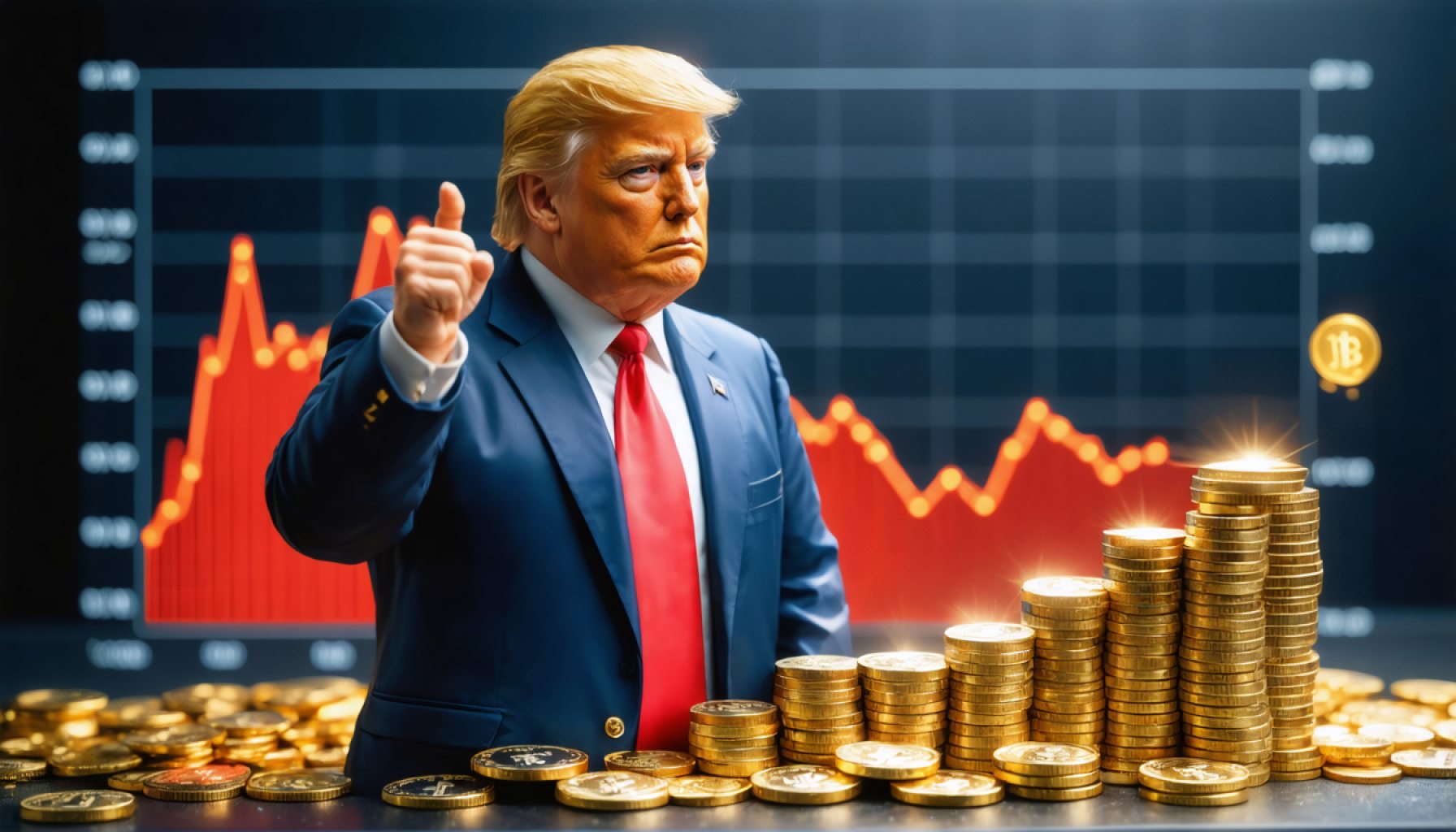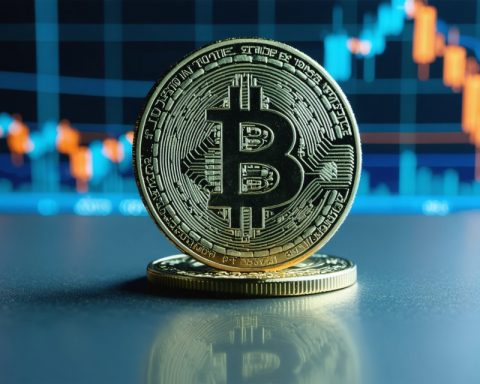- A sweeping announcement of tariffs by President Trump ignited turmoil in both traditional and cryptocurrency markets, especially impacting China, Japan, and the EU.
- Bitcoin and Ethereum experienced sharp declines, with Bitcoin dropping from $88,500 to $83,500 and Ethereum falling below $1,800, resulting in a $490 million market loss.
- The broader stock market mirrored this downturn, losing $2 trillion, with significant declines in tech giants such as Apple and Amazon.
- Over 160,000 cryptocurrency traders faced substantial losses as leveraged positions were liquidated, totaling nearly half a billion dollars.
- Geopolitical factors highlighted the cryptocurrency market’s fragility, with the Crypto Fear & Greed Index plummeting from near neutrality to 24.
- These events illustrate the interconnected nature of global finance and underscore the volatility inherent in the cryptocurrency world.
Amidst the swirling chaos of global commerce, a storm brewed that sent shockwaves through the nebulous world of cryptocurrencies. As President Trump revealed sweeping tariffs, digital and traditional assets plunged into turmoil. The decree announced a minimum 10% duty, with heavier burdens imposed on key economic players like China, Japan, and the European Union, immediately stirring fear across financial arenas.
In the eye of this economic tempest, the cryptocurrency market reeled. Bitcoin, a stalwart of digital currency, tumbled from $88,500 to $83,500, while Ethereum, its close counterpart, slipped below $1,800 from a previous high of $1,934. The tumble shaved off $490 million, echoing the broader stock market’s descent as it shed $2 trillion in a frantic sell-off. The famed S&P 500 saw tech giants like Apple and Amazon stumble, further fueling the digital downturn.
In a stark reminder of crypto’s fragility, over 160,000 traders were caught in the storm, with leveraged positions mercilessly liquidated to the tune of nearly half a billion dollars. On Binance, a glaring example unfolded as a $12 million Ethereum position was cast into the void. Both bullish and bearish traders found themselves beleaguered, as $257 million flowed out of long positions and $232 million from shorts.
The market’s fickle nature reflects its sensitivity to geopolitical tremors. Within hours, optimism evaporated, replaced by fear as the Crypto Fear & Greed Index plummeted to 24. Just a week prior, this index teetered near neutrality, highlighting the abrupt and dramatic shift in sentiment. The surge in trading volume underscored large players recalibrating their strategies, while retail participants watched from the sidelines, wary of the uncertain horizon.
The crux of this financial conundrum lies not in rumor or speculation, but in stark geopolitical realities. The shockwaves from Trump’s tariff announcements amplified existing economic anxieties, creating a feedback loop that led to synchronous sell-offs across both digital and conventional markets. As crypto entwines itself more deeply with the fabric of global finance, such events reveal the interconnected vulnerabilities that lurk beneath the surface.
Ultimately, this episode serves as a stark reminder of the inherent volatility in the cryptocurrency realm. It underscores the rapid, visceral reactions markets can have to macroeconomic developments. In a world increasingly defined by its interconnectedness, each policy shift resonates far beyond its origin, reshaping markets and the financial destinies tied to them.
The Ripple Effect: How Trump’s Tariffs Shook the Cryptocurrency Landscape
Unpacking the Impact of Tariffs on Cryptocurrencies
The announcement of sweeping tariffs by President Trump significantly impacted not only traditional markets but also the volatile world of cryptocurrencies. This confluence of geopolitical and economic tensions serves as a case study in understanding the nuanced interplay between policy changes and market reactions.
Geopolitical Sensitivity of Cryptocurrency Markets
Cryptocurrency markets are notably sensitive to geopolitical shifts. The reaction to Trump’s tariffs exemplifies how macroeconomic policies can trigger significant fluctuations in digital currencies. The correlation between traditional financial markets and cryptocurrencies has been debated, but this instance shows a direct impact.
Key Questions and Insights
1. Why Did Cryptocurrencies Plunge Following the Tariff Announcement?
The decline in cryptocurrency value can be attributed to heightened market uncertainty and investor fear, fueled by the broader economic uncertainty introduced by tariffs. Investors often retreat from perceived high-risk assets like cryptocurrencies in times of economic instability.
2. Are Such Volatile Market Reactions Common?
Yes, cryptocurrencies are known for their volatility. External factors like government policies, global economic events, and technological developments can cause rapid changes in valuation, reflecting their relative infancy and speculative nature.
3. How Does the Crypto Fear & Greed Index Work?
The Crypto Fear & Greed Index measures market sentiment through various indicators, including volatility, market momentum, trading volume, and social media trends. A plunge from neutrality to a fear state indicates investors’ quick shift from optimism to caution.
Industry Trends and Predictions
Embracing Market Volatility
As cryptocurrencies become more integrated into global finance, their susceptibility to geopolitical events will likely increase. Investors should remain vigilant about global developments and consider diversifying their portfolios to mitigate risks.
Increasing Institutional Interest
Despite volatility, institutional interest in cryptocurrencies continues to grow, driven by the potential for high returns. This interest will likely provide some market stabilization and enhance regulatory scrutiny and frameworks.
Pros and Cons Overview
Pros
– Potential for high returns
– Increasing acceptance and integration into traditional finance
Cons
– High volatility and risk
– Sensitivity to external economic shocks
Actionable Tips for Investors
1. Diversification: Avoid putting all investments in one asset class. A diversified portfolio can better withstand market shocks.
2. Stay Informed: Keep abreast of geopolitical and economic news, especially developments that might impact financial markets.
3. Cautious Leverage: Given the potential for rapid market shifts, use leverage cautiously to avoid substantial losses during downturns.
Related Resources
For more insights into financial markets and economic trends, consider visiting the Bloomberg and Forbes websites for the latest updates and expert analyses.
In conclusion, understanding the interconnectedness of global financial systems and staying informed about potential geopolitical impacts are crucial strategies for anyone navigating the unpredictable waves of cryptocurrency investments.
















